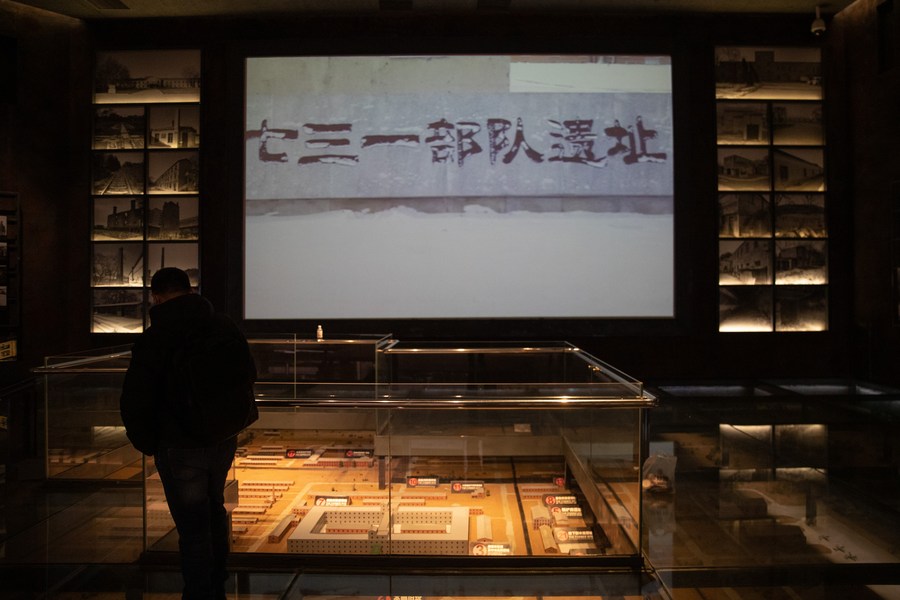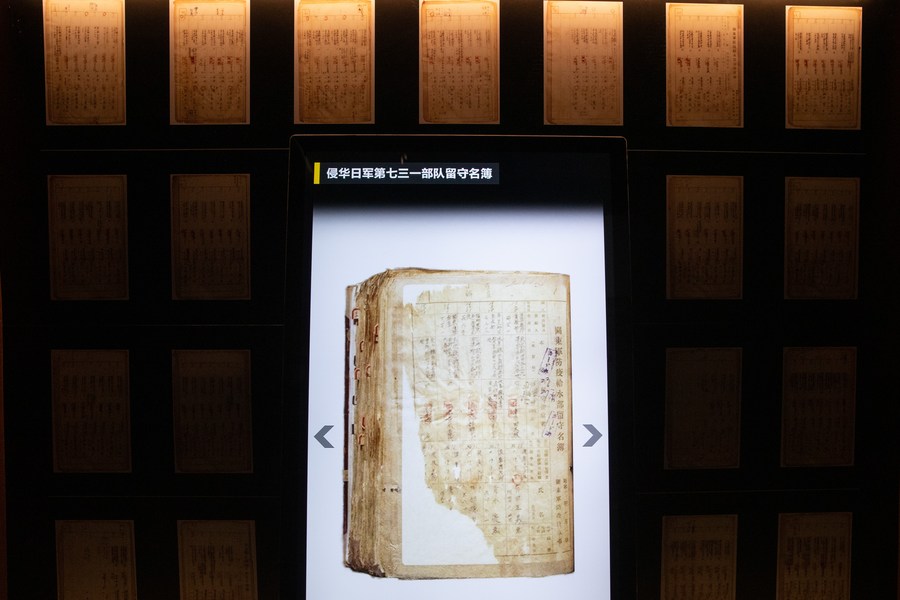
This photo taken on Dec. 10, 2022 shows an exhibition hall at the Museum of Evidence of War Crimes by the Japanese Army Unit 731 in Harbin, capital of northeast China's Heilongjiang Province. (Xinhua/Zhang Tao)
HARBIN, Dec. 14 (Xinhua) -- More than 20,000 pieces of artifacts and documents are on exhibit for the first time in a museum in northeast China's Heilongjiang Province, testifying crimes against humanity by the notorious Japanese germ warfare army known as Unit 731 during the World War II.
Following a preparation since September, the Museum of Evidence of War Crimes by the Japanese Army Unit 731 in Harbin, the provincial capital of Heilongjiang, put on the exhibition earlier this month.
Jin Chengmin, curator of the museum, said the new evidence includes 2,862 incriminating artifacts, 23,000 pages of historical files, and 810 minutes of video footage, which were obtained through archaeological excavations, transnational forensics, and academic research since 2015.
At least 3,000 people died at the unit's base in Harbin alone between 1939 and 1945, mostly in experiments for the development of biological weapons.

A staff member works at an exhibition hall at the Museum of Evidence of War Crimes by the Japanese Army Unit 731 in Harbin, capital of northeast China's Heilongjiang Province, Dec. 10, 2022. (Xinhua/Zhang Tao)

This photo taken on Dec. 10, 2022 shows a newly-exhibited roster of Unit 731 affiliated with the Japanese Kwantung Army at the Museum of Evidence of War Crimes by the Japanese Army Unit 731 in Harbin, capital of northeast China's Heilongjiang Province. (Xinhua/Zhang Tao)

This photo taken on Dec. 10, 2022 shows the artifacts and documents on exhibit at the Museum of Evidence of War Crimes by the Japanese Army Unit 731 in Harbin, capital of northeast China's Heilongjiang Province. (Xinhua/Zhang Tao)

This photo taken on Dec. 10, 2022 shows the bacteriological incubators on display at the Museum of Evidence of War Crimes by the Japanese Army Unit 731 in Harbin, capital of northeast China's Heilongjiang Province. (Xinhua/Zhang Tao)

This photo taken on Dec. 10, 2022 shows replicas of clay-made germ bombs on display at the Museum of Evidence of War Crimes by the Japanese Army Unit 731 in Harbin, capital of northeast China's Heilongjiang Province. (Xinhua/Zhang Tao)

This photo taken on Dec. 10, 2022 shows an exhibition hall at the Museum of Evidence of War Crimes by the Japanese Army Unit 731 in Harbin, capital of northeast China's Heilongjiang Province. (Xinhua/Zhang Tao)■












